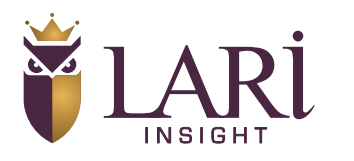What is Universal Life Insurance?
When exploring life insurance options in Canada, it’s essential to understand the various products available. Universal Life Insurance stands out as a versatile choice, offering both insurance protection and a savings element. This article breaks down the basics of Universal Life Insurance, highlighting its key features for those new to the concept.
Key Features of Universal Life Insurance
Universal Life Insurance is a type of permanent life insurance with unique characteristics. Below are its primary features:
- Flexible Premiums: This policy allows you to adjust your premium payments within set limits, offering financial flexibility during different life stages.
- Investment Component: A portion of your premium is invested, which has the potential to grow over time, depending on market performance and chosen investments.
- Policyholder Control: You have the option to select how your premiums are invested, providing a level of personal control over the policy’s investment aspect.
With Universal Life Insurance, you get a comprehensive plan that combines life insurance coverage with investment opportunities.
Advantages and Disadvantages
Like any financial product, Universal Life Insurance has its strengths and limitations:
- Customization: You can tailor the policy to meet your individual financial needs and objectives.
- Potential for Higher Returns: Thanks to the investment component, there’s an opportunity for your policy to increase in value, influenced by market performance and your investment choices.
- Complexity: The flexibility and investment options also bring a level of complexity. Understanding your investments and market trends is crucial for managing this type of policy effectively.
It’s important to weigh the potential for higher returns against the inherent market risks associated with the investment component.
“Universal Life Insurance offers a mix of life insurance protection and the opportunity to grow savings through personal investment choices.”
In summary, Universal Life Insurance is particularly suited to those who are looking for more than traditional life insurance and are interested in incorporating an investment strategy into their policy. However, it requires an understanding of investment principles and active management. Consulting with a financial advisor is recommended for those considering this type of insurance.
What is Whole Life Insurance?
Whole Life Insurance is a type of permanent life insurance that offers lifelong coverage, combined with a savings component. It’s a popular choice in Canada for those seeking a stable and predictable insurance option. This section provides an overview of Whole Life Insurance, its features, and its potential role in your financial plan.
Key Features of Whole Life Insurance
Whole Life Insurance is known for its consistency and long-term value. Here are some of its defining characteristics:
- Fixed Premiums: Premiums are set at the start and do not change throughout the life of the policy, providing predictable costs.
- Guaranteed Death Benefit: This insurance guarantees a death benefit payout to beneficiaries, regardless of when the policyholder passes away.
- Cash Value Accumulation: A portion of the premium contributes to a cash value, which grows over time and can be accessed under certain conditions.
- Dividends (in Participating Policies): Some Whole Life policies may pay dividends, which can be used in various ways, such as to reduce premiums or increase coverage.
Whole Life Insurance is designed to offer both insurance coverage and a form of savings, making it a multifaceted financial tool.
Advantages and Disadvantages
Considering the pros and cons of Whole Life Insurance is key to understanding its suitability for your needs:
- Predictability: The fixed premiums and guaranteed death benefit provide a stable and predictable insurance option.
- Guaranteed Cash Value Growth: The cash value of the policy grows at a guaranteed rate, offering a secure savings component.
- Higher Initial Premiums: Whole Life Insurance typically has higher initial premiums than other types of life insurance, due to its lifelong coverage and cash value component.
While the premiums are higher, the long-term benefits and stability can make Whole Life Insurance an appealing option for those seeking a combination of insurance and savings.
“Whole Life Insurance provides lifelong insurance coverage with the added benefit of a savings component, making it a comprehensive financial tool.”
In conclusion, Whole Life Insurance is a robust option within the Canadian insurance landscape, offering lifelong coverage and a savings element. It’s suitable for those who value stability and predictability in their insurance and financial planning. However, the higher premiums require consideration to ensure they align with your long-term financial capabilities and goals. For a deeper understanding and personalized advice, consulting with a financial advisor is advisable.
Understanding the specifics of Whole Life Insurance is crucial in determining if it’s the right choice for your individual needs and financial objectives. It’s a policy that offers both security and savings, a combination that can be highly valuable for the right individual.
Comparing Universal Life and Whole Life Insurance
Choosing the right permanent life insurance policy in Canada involves understanding the differences between Universal Life and Whole Life Insurance. Both offer lifelong coverage but have distinct features that cater to different financial needs and preferences. This section compares these two types of insurance to aid in making an informed decision.
Key Differences Between Universal Life and Whole Life Insurance
While both are types of permanent life insurance, there are several key differences to consider:
- Premium Flexibility: Universal Life Insurance offers adjustable premiums, while Whole Life Insurance has fixed premiums.
- Investment Potential and Control: Universal Life Insurance includes a more prominent investment component, offering potential growth and policyholder control over investments. Whole Life Insurance provides a guaranteed cash value growth with less emphasis on investment management.
- Cost Considerations: Whole Life Insurance generally has higher initial premiums, whereas Universal Life Insurance can be more cost-effective initially but requires active management.
- Predictability and Stability: Whole Life Insurance is known for its predictability and stability, with guaranteed death benefits and fixed premiums. Universal Life Insurance, while flexible, can be more complex and sensitive to market changes.
Understanding these differences is crucial in choosing the policy that best aligns with your financial situation and goals.
Choosing the Right Policy
When deciding between Universal Life and Whole Life Insurance, consider the following:
- Financial Goals: Assess your long-term financial objectives, including savings, investment, and coverage needs.
- Risk Tolerance: Consider your comfort level with investment risk, as Universal Life Insurance may involve more market exposure.
- Budget: Evaluate your current and future financial situation to determine which premium structure suits your budget.
Each type of insurance serves different purposes and offers distinct advantages, making it important to align your choice with your personal financial strategy. Regardless of which life insurance product you choose, it’s important to assess your coverage needs appropriately. We created the LARi Insight Life Insurance Calculator for Canada to help you evaluate your assets, debts, and the financial needs of your loved ones to determine the appropriate amount based on your situation.
A Final Note
“Whether choosing Universal Life or Whole Life Insurance, the best decision is one that fits seamlessly into your overall financial plan, offering peace of mind and stability for the future.”
In summary, both Universal Life and Whole Life Insurance provide valuable options for lifelong coverage, each with unique features and benefits. Understanding their differences is key to selecting the right policy for your individual needs.



